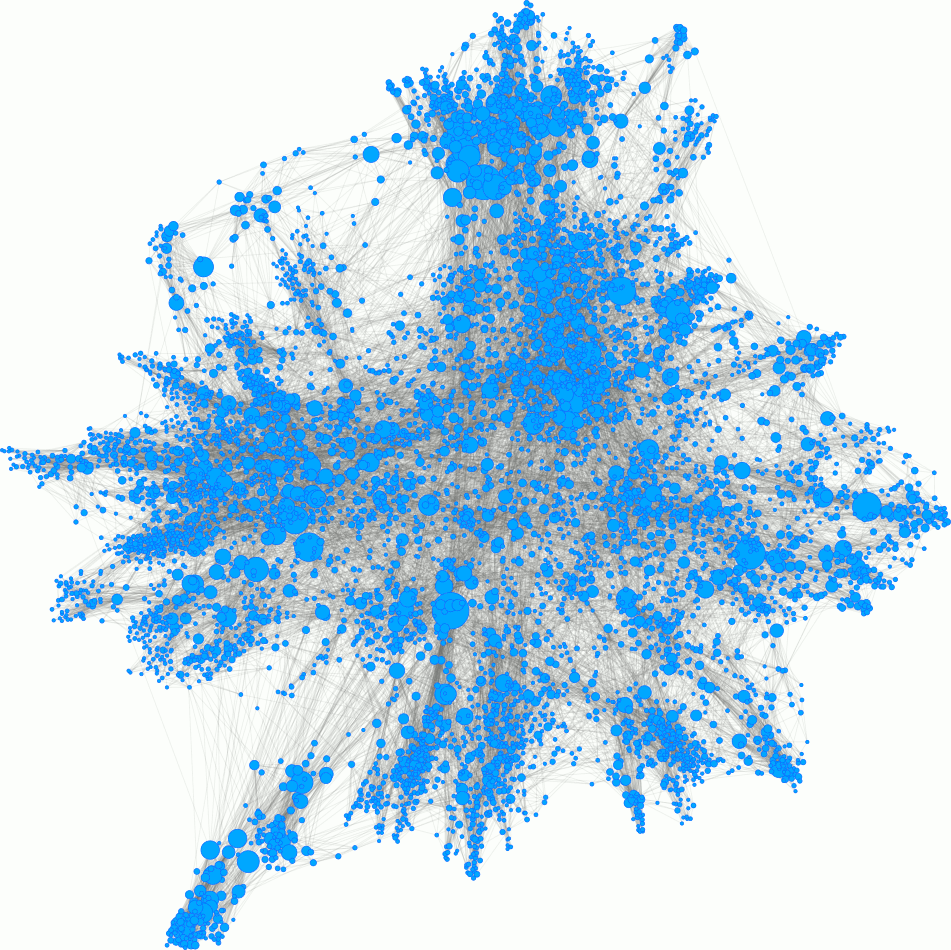Web of trust
A web of trust (wikipedia) is a network of key signatures. It has been used for a while with PGP to establish a decentralized trust network for encrypted communications and proof of authenticity. Duniter's web of trust aims to add unicity of digital identity (one person = one key) and to ensure frequent renewal of the signatures. This has several applications from Duniter-specific Universal Dividend and more general voting systems or proof of identity.
Vocabulary
Here is some Duniter specific vocabulary and the equivalent in graph theory (wikipedia).
| word | explanation | graph equivalent | description |
|---|---|---|---|
| identity | living person uniquely associated with a cryptographic key | vertex, node (wikipedia) | node in the network |
| membership | fact for an identity for being part of the web of trust | ||
| certification | dated and cryptographically signed document assessing IRL trust | edge, link | edge in the network |
| identity indegree | number of certifications received by an identity | node indegree (wikipedia) | number of links pointing towards a node |
| identity outdegree | number of certifications emitted by an identity | node outdegree (wikipedia) | number of links coming from a node |
| (in/out)neighborhood of a node (wikipedia) | subgraph made of adjacent nodes (using only in/out links) |
Rules
We can divide the rules of Duniter web of trust into static and temporal rules describing the state of a snapshot of the graph and the evolution of it along time.
Static rules
The static rules describe the graph properties we can observe on a snapshot of the web of trust.
- minimum indegree is 5
- maximum outdegree is 100
The number of identities member of the web of trust is written N.
Dynamic rules
The dynamic rules describe the evolution of the web of trust along time.
- and identity must renew its membership every 1 year and is removed from the wot otherwise
- a certification must be renewed every 2 years and is removed from the wot otherwise
- a certification can only be submitted more than 5 days after the previous one (new or renewal)
Entry rule
In addition to the previous rules, an identity I must comply with the distance rule to enter the web of trust. The distance rule is defined as follows:
- an identity with indegree and outdegree greater than
N^(1/5)is called "referent" - the 6-inneighborhood of I must contain at least 80% of the total number of referents
The distance rules applies on identity entry and membership renewal.
History
Duniter Ğ1 web of trust started on 2017-03-08 with 59 identities and 551 certifications at the block 0 of Duniter Ğ1 blockchain. As of 2023-09-25 it counts 8449 member identities and 98756 active certifications. This graph shows the evolution of the member count along time.

evolution of the member count along time
made with DataJune
We can see that part of the identities expire after not being renewed during the 1 year period. This ensures all the member identities are actively using their digital identity. It is possible to display the evolution of this web of trust using a force-directed layout.
snapshot of the web of trust (2022-11-22)
animation is visible on https://youtu.be/Hj3GpaEYLwA
